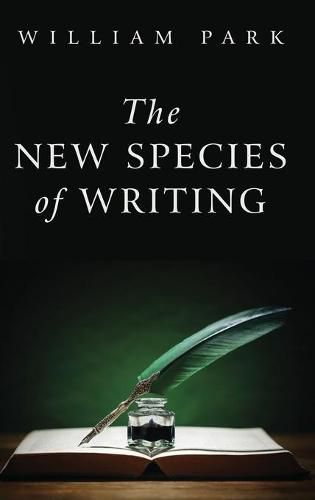Readings Newsletter
Become a Readings Member to make your shopping experience even easier.
Sign in or sign up for free!
You’re not far away from qualifying for FREE standard shipping within Australia
You’ve qualified for FREE standard shipping within Australia
The cart is loading…






This title is printed to order. This book may have been self-published. If so, we cannot guarantee the quality of the content. In the main most books will have gone through the editing process however some may not. We therefore suggest that you be aware of this before ordering this book. If in doubt check either the author or publisher’s details as we are unable to accept any returns unless they are faulty. Please contact us if you have any questions.
William Park received his undergraduate degree from Princeton University and his doctorate in English and Comparative Literature from Columbia University. He has taught at Hamilton College, Columbia, the University of Navarre, and for thirty-eight years at Sarah Lawrence College, where he also co-founded the Film Studies program. Professor Park has published numerous articles on literature and film, and his books include The College Anthology of English and American Poetry, The Idea of Rococo, Newman on the Bible, Hollywood: An Epic Production, and What Is Film Noir? He and his wife Sylvia Thompson currently live in Santa Cruz, California, where he teaches literature and film at UCSC’s Osher Lifelong Learning Institute.
This book joins Park’s seven published articles on the mid-eighteenth-century English novel. Although novels existed before 1740, it was only with the publication of Richardson’s Pamela that contemporary critics and readers became conscious of a new species of writing. But whereas historians of the novel tend to regard the works of Richardson and Fielding as prototypes which evolved into the modern novel, Park’s essays argue that mid-eighteenth-century English novels were instead instances of the first type of novel–with its own conventions and worldview. This book contains studies of the two great masterpieces of the period, Richardson’s Clarissa and Fielding’s Tom Jones. The essay on Sterne’s Tristram Shandy describes how that work was the link to yet a second type: the sentimental novel. The book concludes with an essay describing the relationship between these novels and the dominant artistic style of the first half of the eighteenth century, the Rococo.
$9.00 standard shipping within Australia
FREE standard shipping within Australia for orders over $100.00
Express & International shipping calculated at checkout
This title is printed to order. This book may have been self-published. If so, we cannot guarantee the quality of the content. In the main most books will have gone through the editing process however some may not. We therefore suggest that you be aware of this before ordering this book. If in doubt check either the author or publisher’s details as we are unable to accept any returns unless they are faulty. Please contact us if you have any questions.
William Park received his undergraduate degree from Princeton University and his doctorate in English and Comparative Literature from Columbia University. He has taught at Hamilton College, Columbia, the University of Navarre, and for thirty-eight years at Sarah Lawrence College, where he also co-founded the Film Studies program. Professor Park has published numerous articles on literature and film, and his books include The College Anthology of English and American Poetry, The Idea of Rococo, Newman on the Bible, Hollywood: An Epic Production, and What Is Film Noir? He and his wife Sylvia Thompson currently live in Santa Cruz, California, where he teaches literature and film at UCSC’s Osher Lifelong Learning Institute.
This book joins Park’s seven published articles on the mid-eighteenth-century English novel. Although novels existed before 1740, it was only with the publication of Richardson’s Pamela that contemporary critics and readers became conscious of a new species of writing. But whereas historians of the novel tend to regard the works of Richardson and Fielding as prototypes which evolved into the modern novel, Park’s essays argue that mid-eighteenth-century English novels were instead instances of the first type of novel–with its own conventions and worldview. This book contains studies of the two great masterpieces of the period, Richardson’s Clarissa and Fielding’s Tom Jones. The essay on Sterne’s Tristram Shandy describes how that work was the link to yet a second type: the sentimental novel. The book concludes with an essay describing the relationship between these novels and the dominant artistic style of the first half of the eighteenth century, the Rococo.